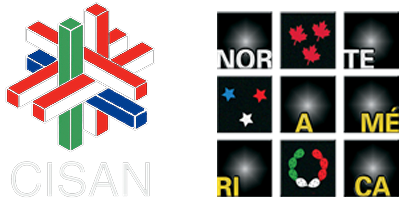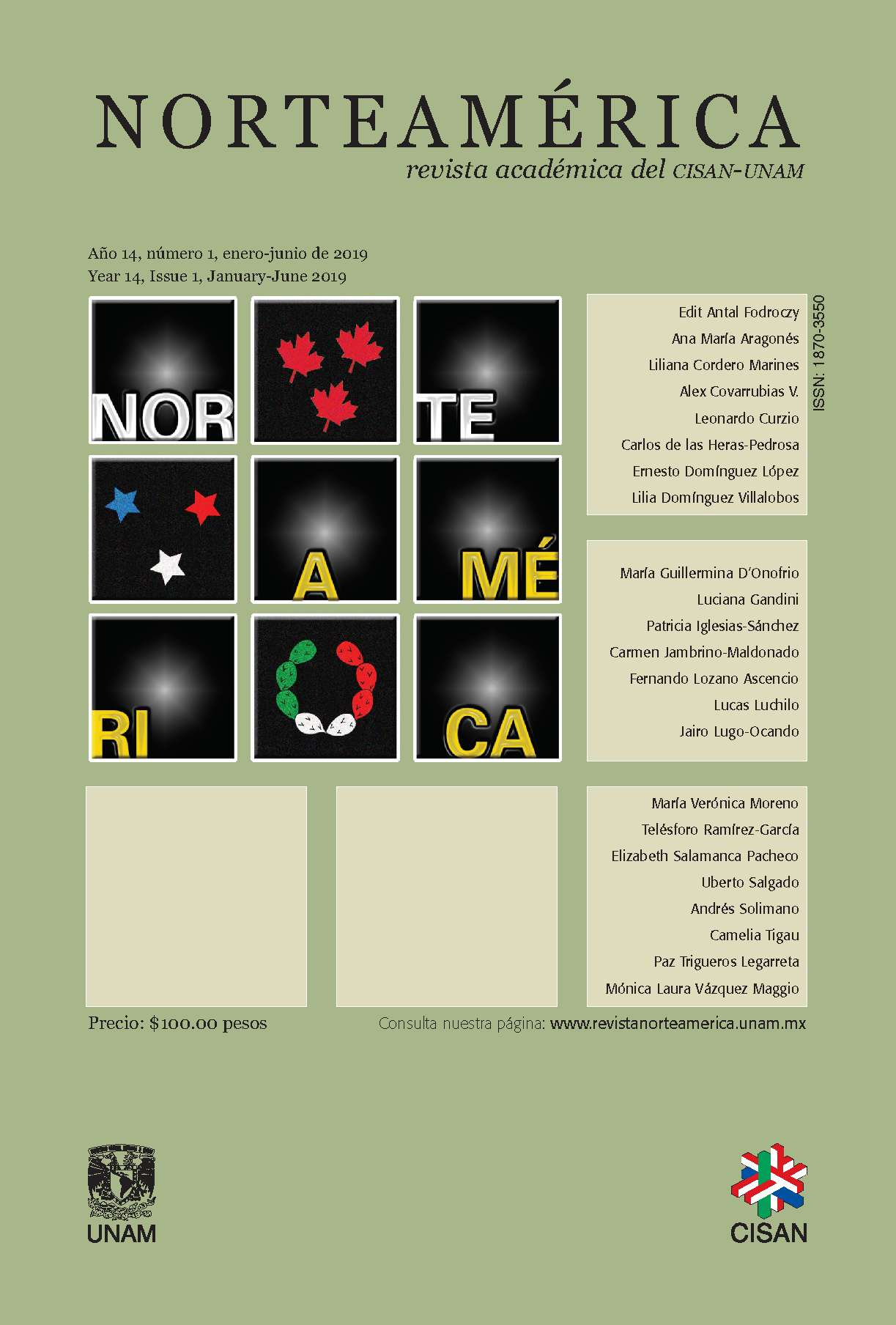Abstract
This article analyzes the motivations behind the migration of Mexican professionals (MPs) to the United States based on a survey to 813 MPs and places it within the frame of middle class behavior. We look into the factors behind the three most frequent motivations for MP migration: to seek a better job, gain international experience, or hoping for a better quality of life. The logistic models used here show that the neoclassical explanation consistent with the homo economicus is insufficient, since there are factors of a social and personal nature that should be taken into account. Thus, the search for a greater quality of life has as an essential component the desire to be near one’s family; and behind the motivation to acquire international experience there are a number of considerations such as limited job opportunities and a lack of an infrastructure for adequate laboral performance.References
ARANGO, JOAQUÍN
“Explaining Migration: A Critical View”, International Social Science Journal, vol. 52, no. 165, pp. 283-296.
ARNOLD, FRED
“Birds of Passage No More: Migration Decision Making Among Filipino Immigrants in Hawaii”, International Migration, vol. 25, no. 1, pp. 41-61.
BANERJEE, ABHIJIT, Y ESTHER DUFLO
“What is Middle Class about the Middle Classes around the World?”, Journal of Economic Perspectives, vol. 22, no. 2, pp. 3-28.
BAYES, MARJORIE
“The Effects of Relocation on the Trailing Spouse”, Smith College Studies in Social Work, vol. 59, no. 3, pp. 280-288.
BERRY, JOHN W., ET AL.
Cross-Cultural Psychology. Research and Applications, Cambridge, Cambridge University Press.
BIAO, XANG, Y WEI SHEN
“International Student Migration and Social Stratification in China”, International Journal of Educational Development, vol. 29, no. 5, pp. 513-522.
BIRDSALL, NANCY
“The (Indispensable) Middle Class in Developing Countries”, en Ravi Kanbur y Michael Spence, eds., Equity and Growth in a Globalizing World, Washington D.C., The World Bank, pp. 157-187.
BLANCHFLOWER, DAVID
“International Evidence on Well-Being”, en Alan B. Krueger, ed., Measuring the Subjective Well-Being of Nations: National Accounts of Time Use and Well-Being, Chicago, University of Chicago Press, pp. 155-226.
BONASIA, MARIANGELA, Y ORESTE NAPOLITANO
“Determinants of Interregional Migration Flows: The Role of Environmental Factors in the Italian Case”, The Manchester School, vol. 80, no. 4, pp. 525-544.
BOURDIEU, PIERRE
A Social Critique of the Judgement of Taste, Cambridge, Harvard University Press.
CARLING, JØRGEN
“Emigration, Return and Development in Cape Verde: The Impact of Closing Borders”, Population, Space and Place, vol. 10, no. 2, pp. 113-132.
CASTAÑOS-LOMNITZ, HERIBERTA
La migración de talentos en México, México, IIEC-UNAM.
CATTANEO, CRISTINA
“The Determinants of Actual Migration and the Role of Wages and Unemployment in Albania: An Empirical Analysis”, The European Journal of Comparative Economics, vol. 5, no. 1, pp. 3-32.
CLYNE, MICHAEL, Y JAMES JUPP
Multiculturalism and Integration A Harmonious Relationship, Canberra, Australian National University Press.
COLIC-PEISKER, VAL
Migration, Class, and Transnational Identities: Croatians in Australia and America, Champaign, University of Illinois Press.
COLLINS, FRANCIS
“Teaching English in South Korea: Mobility Norms and Higher Education Outcomes in Youth Migration”, Children's Geographies, vol. 12, no. 1, pp. 40-45.
CZAIKA, MATHIAS, Y MARC VOTHKNECHT
“Migration and Aspirations: Are Migrants Trapped on a Hedonic Treadmill?”, IZA Journal of Migration, vol. 3, no. 1, pp. 1-20.
DE JONG, GORDON, Y JAMES T. FAWCETT
“Motivations for Migration: An Assessment and a Value-Expectancy Research Model”, en Gordon F. De Jong, Robert W. Gardner, eds., Migration Decision Making: Multidisciplinary Approaches to Microlevel Studies in Developed and Developing Countries, Pergamon Press, New York, pp. 13-58.
DE MARIA Y CAMPOS, MAURICIO, ET AL.
El desarrollo de la industria mexicana en su encrucijada: entorno macroeconómico, desafíos estructurales y política industrial, México, Facultad de Economía-UNAM / Universidad Iberoamericana.
GIDDENS, ANTHONY
The Constitution of Society: Outline of the Theory of Structuration, Berkeley, University of California Press.
DOMÍNGUEZ VILLALOBOS, LILIA, Y FLOR BROWN GROSSMAN
“Trade Liberalization and Gender Wage Inequality in Mexico”, Journal of Feminist Economics, vol.16, no. 4, pp. 53-79.
HARVEY, MICHAEL
“Dual-Career Couples during International Relocation: The Trailing Spouse”, The International Journal of Human Resource Management, vol. 9, no. 2, pp. 309-331.
HEIMAN, RACHEL, MARK LIECHTY Y CARLA FREEMAN
“Introduction: Charting an Anthropology of the Middle Classes”, en Rachel Heiman, Mark Liechty y Carla Freeman, eds., The Global Middle Classes: Theorizing through Ethnography, Santa Fe, School for Advanced Research Press, pp. 3-29.
JENNISSEN, ROEL
Macro-Economic Determinants of International Migration in Europe, Amsterdam, Rozenberg Publishers.
KURUNOVA, YULIIA
“Factors of International Migration in EU-8”, International Journal of Academic Research, vol. 5, no. 6, pp. 275-278.
LOZANO-ASCENCIO, FERNANDO, Y LUCIANA GANDINI
“Migración calificada y desarrollo humano en América Latina y el Caribe”, Revista Mexicana de Sociología, vol. 73, no. 4, pp. 675-713.
MARTUSCELLI, JAIME, Y CARLOS MARTÍNEZ LEYVA
“La migración del talento en Mexico”, Universidades, vol. 57, no. 35, pp. 3-14.
MASSEY, DOUGLAS S.
“The Social and Economic Origins of Immigration”, Annals of the American Academy of Political and Social Science, vol. 510, pp. 60-72.
MASSEY, DOUGLAS, ET AL.
Worlds in Motion: Understanding International Migration at the End of the Millennium, Oxford, Oxford University Press.
ORGANIZACIÓN INTERNACIONAL PARA LAS MIGRACIONES (OIM) Y RED INTERNACIONAL DE MIGRACIÓN Y DESARROLLO (RIMD)
“Migración calificada y desarrollo: desafíos para América del Sur”, Cuadernos Migratorios, no. 7 (agosto), en http://www.iom.int/sites/default/files/press_release/file/OIM-Migracion-Calificada-en-America-del-Sur.pdf.
PALLONI, ALBERTO, ET AL.
“Social Capital and International Migration: A Test Using Information on Family Networks”, Chicago Journals, vol. 106, no. 5, pp. 1262-1298.
STIGLITZ, JOSEPH, AMARTYA SEN Y JEAN-PAUL FITOUSSI
“Report by the Commission on the Measurement of Economic Performance and Social Progress”, en https://ec.europa.eu/eurostat/documents/118025/118123/Fitoussi+Commission+report, consultada el 13 de octubre de 2011.
SEN, AMARTYA
“Well-Being, Agency and Freedom: The Dewey Lectures 1984”, The Journal of Philosophy, vol. 82, no. 4, pp. 169-221.
SOLIMANO, ANDRÉS
Élites económicas, crisis y el capitalismo del siglo XXI: la alternativa de la democracia económica, México, Fondo de Cultura Económica.
TODARO, MICHAEL
“A Model for Labor Migration and Urban Unemployment in Less Developed Countries”, American Economic Review, vol. 59, no. 1, pp. 138-148.
TUIRÁN, RODOLFO, Y JOSÉ LUIS ÁVILA
“¿De la fuga a la circulación de talentos?”, Este País (1 de junio), en http://archivo.estepais.com/site/2013/de-la-fuga-a-la-circulacion-de-talentos/, consultada el 7 de marzo de 2018.
TILKIDJIEV, NIKOLAI
“The Middle Class: The New Convergence Paradigm”, Sociologie Romaneasca, vol. 3, no. 3, pp. 210-231.
TUPA, MAGDALENA, Y HERBERT STRUNZ
“Social and Economic Effects of International Migration”, Economics and Management, vol. 18, no. 3, pp. 509-250.
VAN DER GAAG, NICOLE, Y LEO VAN WISSEN
“Economic Determinants of Internal Migration Rates: A Comparison Across Five”, Tijdschrift voor Economische en Sociale Geografie, vol. 99, no. 2, pp. 209-222.
VAN DER KLIS, MARJOLIJN Y CLARA MULDER
“Beyond the Trailing Spouse: The Commuter Partnership as an Alternative to Family Migration”, Journal of Housing and the Built Environment, vol. 23, no. 1, pp. 1-19.
VÁZQUEZ MAGGIO, MÓNICA LAURA
Mexican Migration to Australia: Mobility Patterns and Experiences of the Middle Classes in a Globalizing Age, Cham, Springer.
VÁZQUEZ MAGGIO, LAURA, Y LILIA DOMÍNGUEZ VILLALOBOS
“La migración de mexicanos profesionistas y su inserción laboral en E.U.”, Revista de Economía Mexicana, no. 3, pp. 207-248.
“Migración contemporánea de mexicanos profesionistas a los Estados Unidos. Informe de resultados” (noviembre), en http://ru.economia.unam.mx/id/eprint/55, consultada el 5 de enero de 2018.
WARR, MARK, Y CHRISTOPHER ELLISON
“Rethinking Social Reactions to Crime: Personal and Altruistic Fear in Family Households”, American Journal of Sociology, vol. 106, no. 3, pp. 551-578.
WRIGHT, ERIK OLIN
“Social Class”, en George Ritzer, ed., Encyclopedia of Social Theory, Thousand Oaks, Sage.
ZICKUTE, INETA, Y VILMANTĖ KUMPIKAITĖ-VALIŪNIENĖ
“Theoretical Insights on the Migration Process from Economic Behaviour's Perspective”, Procedia - Social and Behavioral Sciences, vol. 213, pp. 873-878.

This work is licensed under a Creative Commons Attribution-NonCommercial-NoDerivatives 4.0 International License.
Copyright (c) 2018 Lilia Domínguez Villalobos, Mónica Laura Laura Vázquez Maggio



